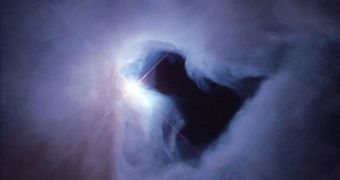There is a great deal of mystery surrounding the way stars end their existence. While basic theories address its earliest days, when it forms inside dense molecular clouds, as well as its life time, as it produces energy by sustaining the nuclear fusion of hydrogen atoms, little knowledge has been established on how the celestial fireball dies. Astronomers know a lot about what happens afterwards, but not too much about the period immediately before the final death throes set in. A new study has recently thrown a closer look at this, in an attempt to gain more insight into the phenomena at work.
The mass of a particular stellar object is absolutely essential to its life and death. Depending on how heavy they are, their ultimate faith is selected. The largest ones explode in supernovae, and then go on to form black holes, whereas the lighter ones turn into white dwarfs or similar structures, continuing to burn their remaining helium fuel for eons. Others in between still explode very powerfully, but then produce neutron stars, with different variants, such as pulsars and magnetars. Stars about the size of our Sun may become red supergiants, before finally deflating back into a small, cooler object.
In the case of objects doomed to turn into black holes, astrophysicists have recently identified a new stage in their life. This occurs just as the star is in its last death throes, before collapsing in on itself under its own gravity and giving birth to a dark behemoth. The new state is called electroweak, and according to experts, a star can endure for millions of years in this stage before finally moving on. The finding was made by Case Western Reserve University (CWRU) physics professor Glenn Starkman and his team, PhysOrg reports.
The expert, together with a group of graduate students and postdoctoral researchers, describe their theory on electroweak stars in a paper they submitted for publication to the esteemed scientific journal Physical Review Letters. They argue in the work that it's only during the stellar collapse phase that electroweak stars can appear. This is when the correct conditions – unbelievably-high temperatures and massive densities – are met to allow for the development of such a structure. Starkman also elaborated a series of calculations, showing that the newly-proposed class of stars can endure up to 10 million years before finally collapsing into a black hole.

 14 DAY TRIAL //
14 DAY TRIAL //